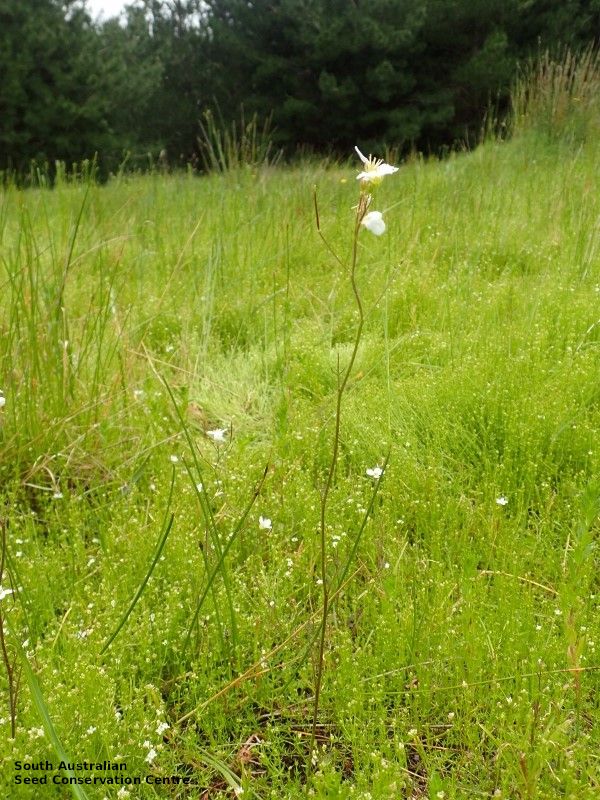
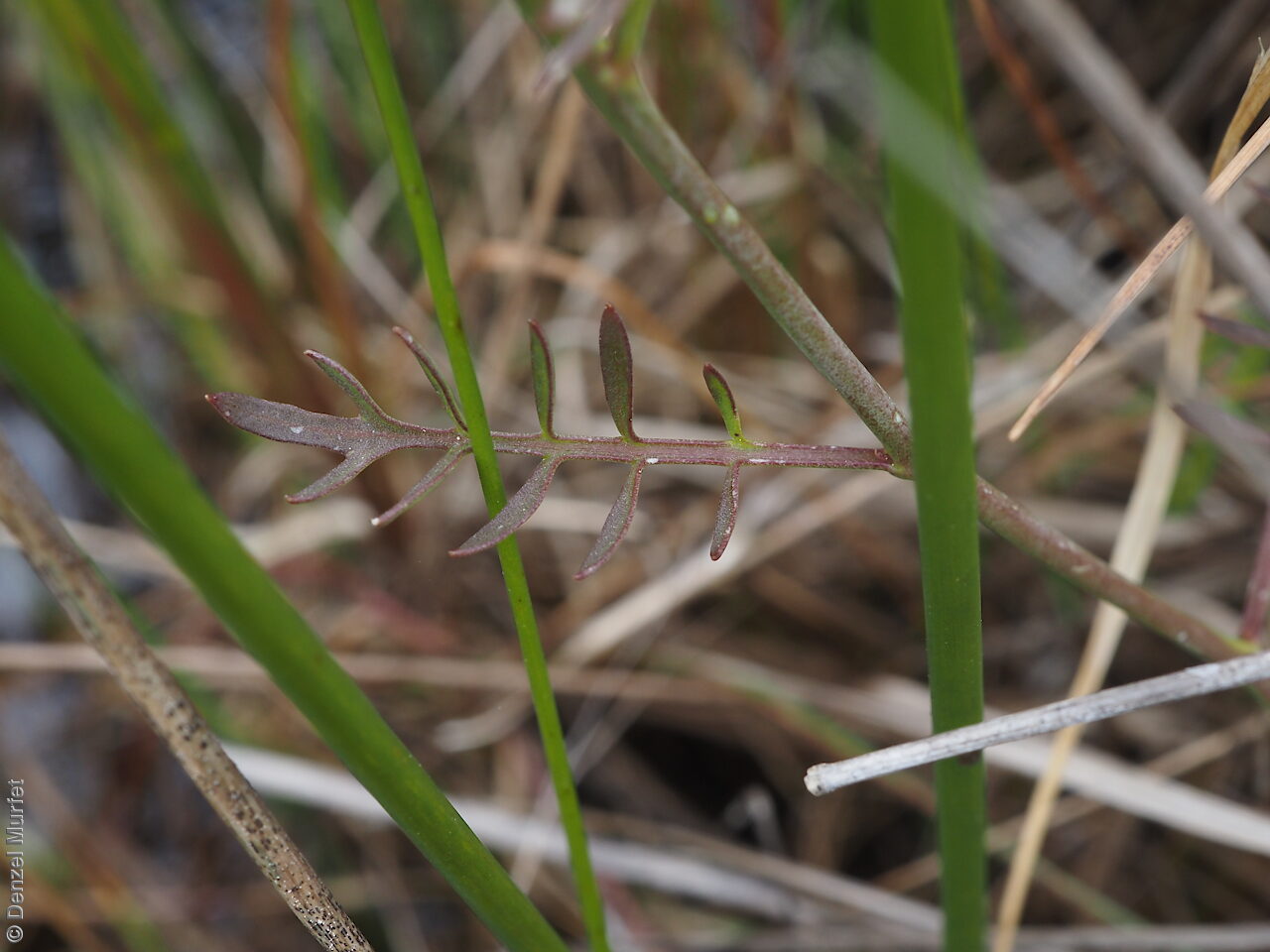
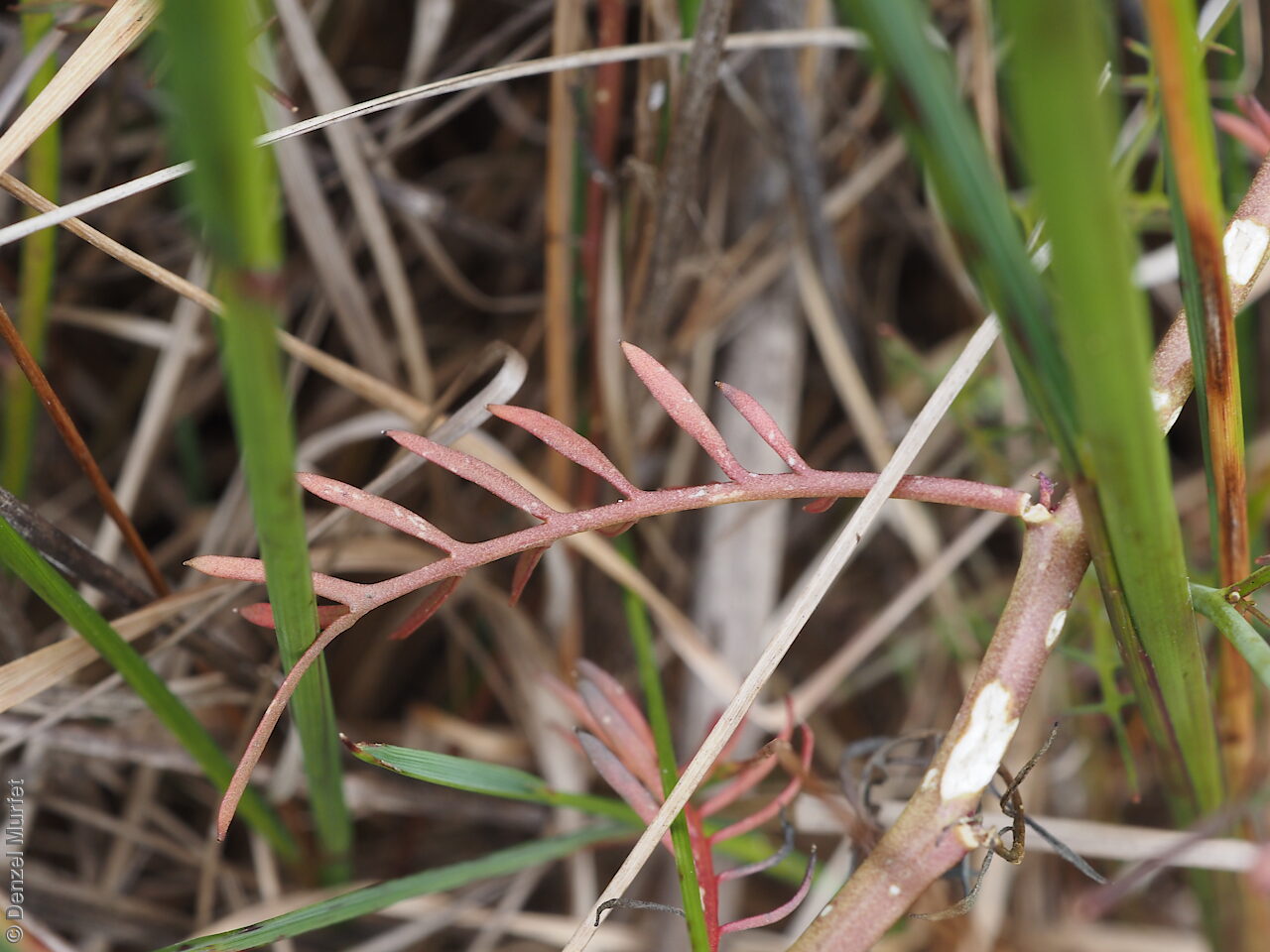
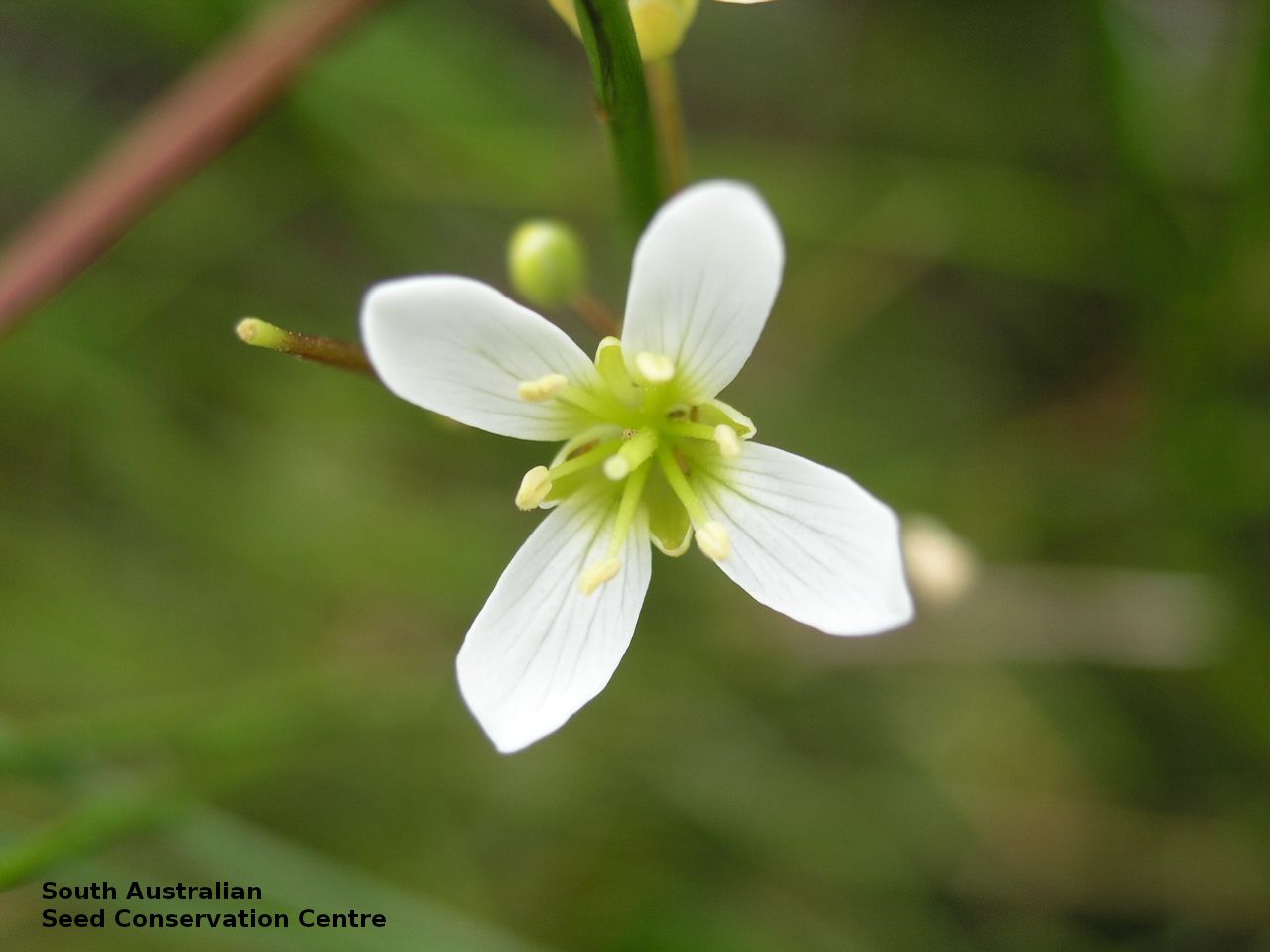
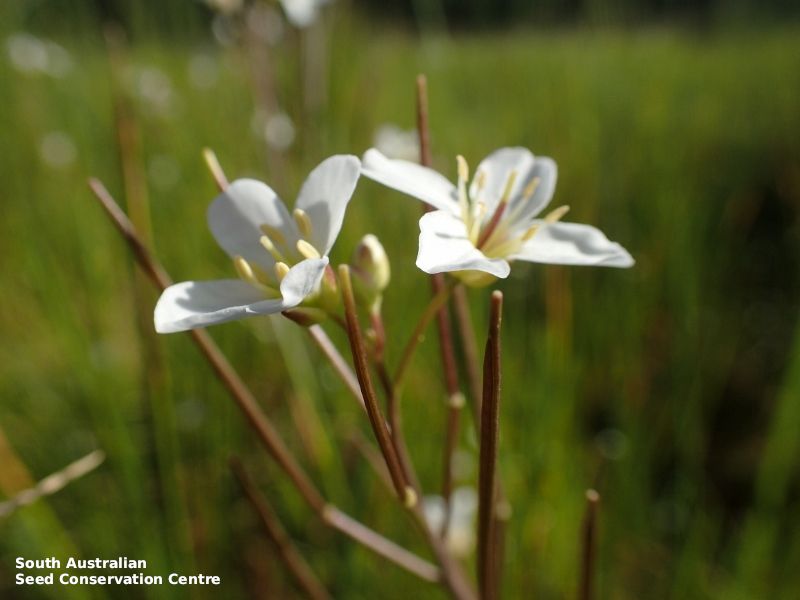
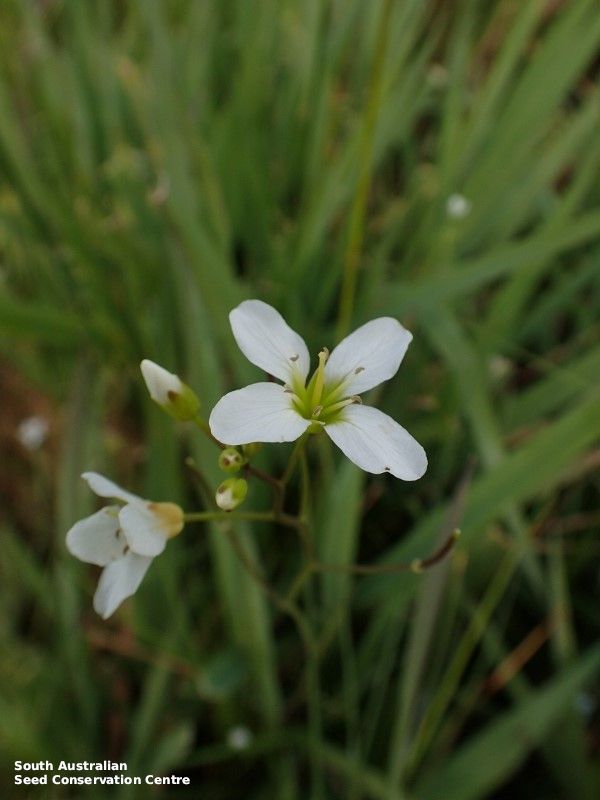
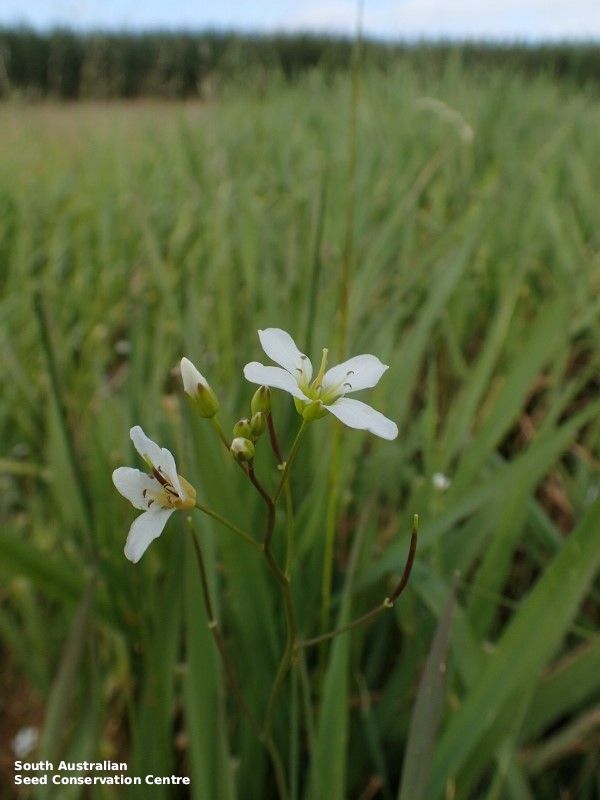
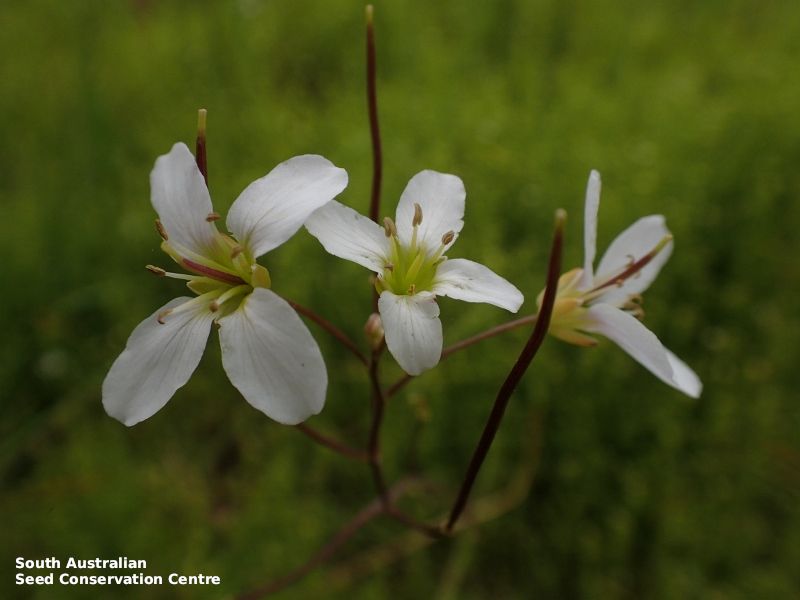
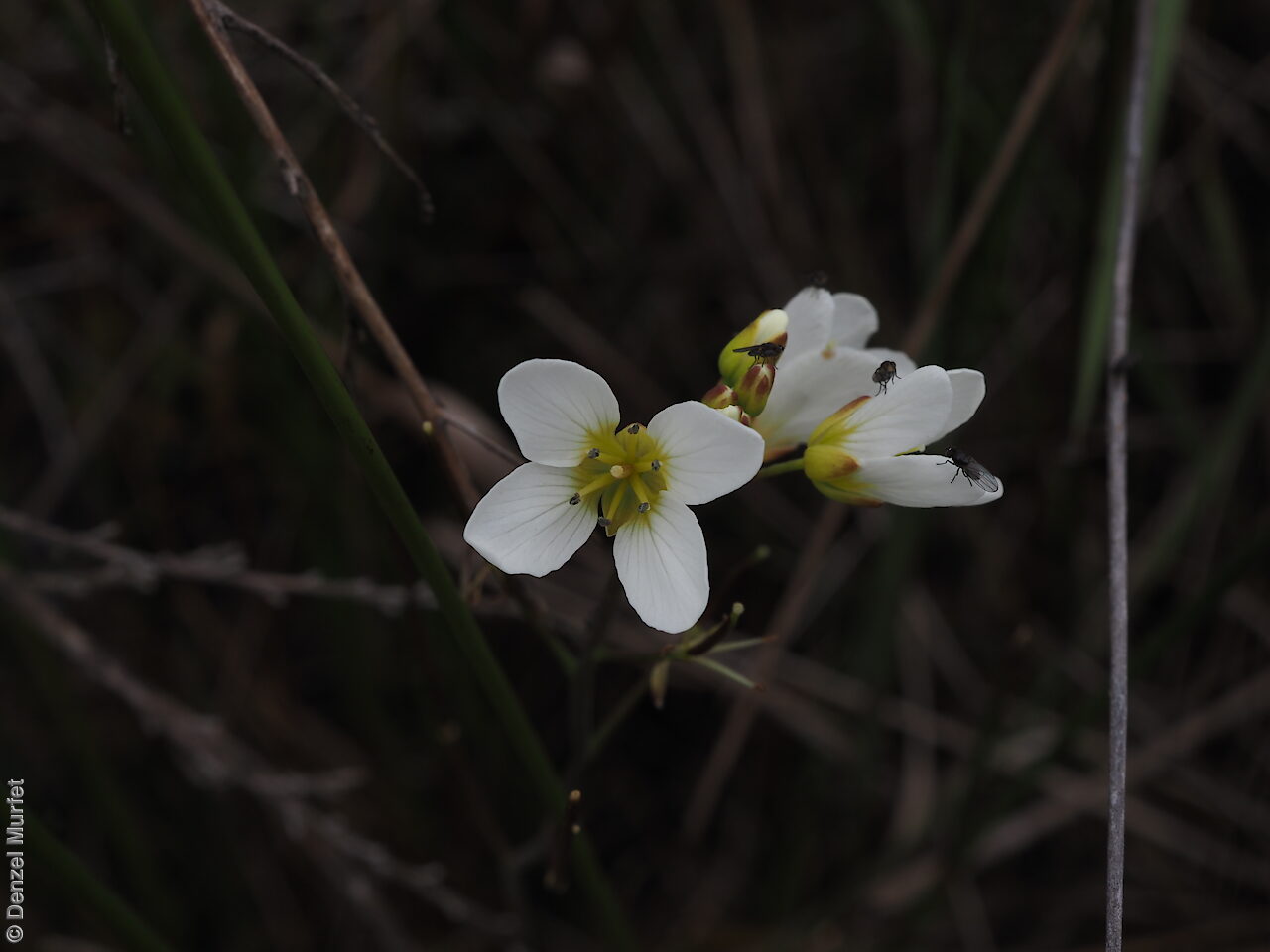
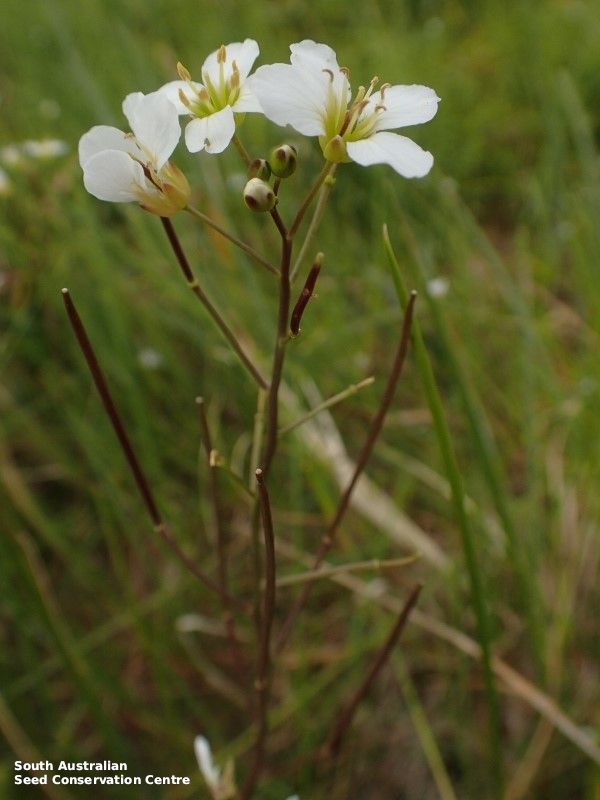
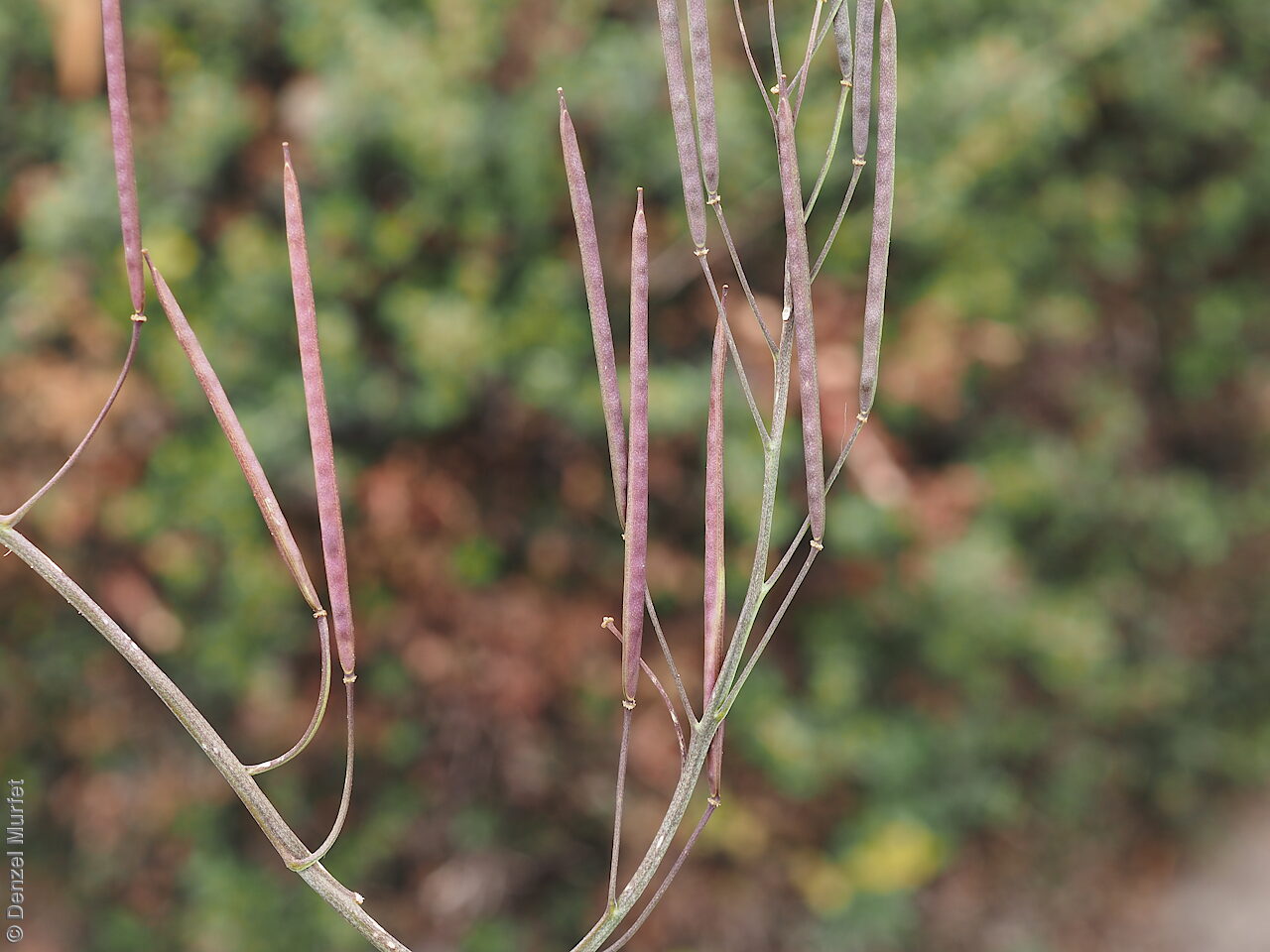
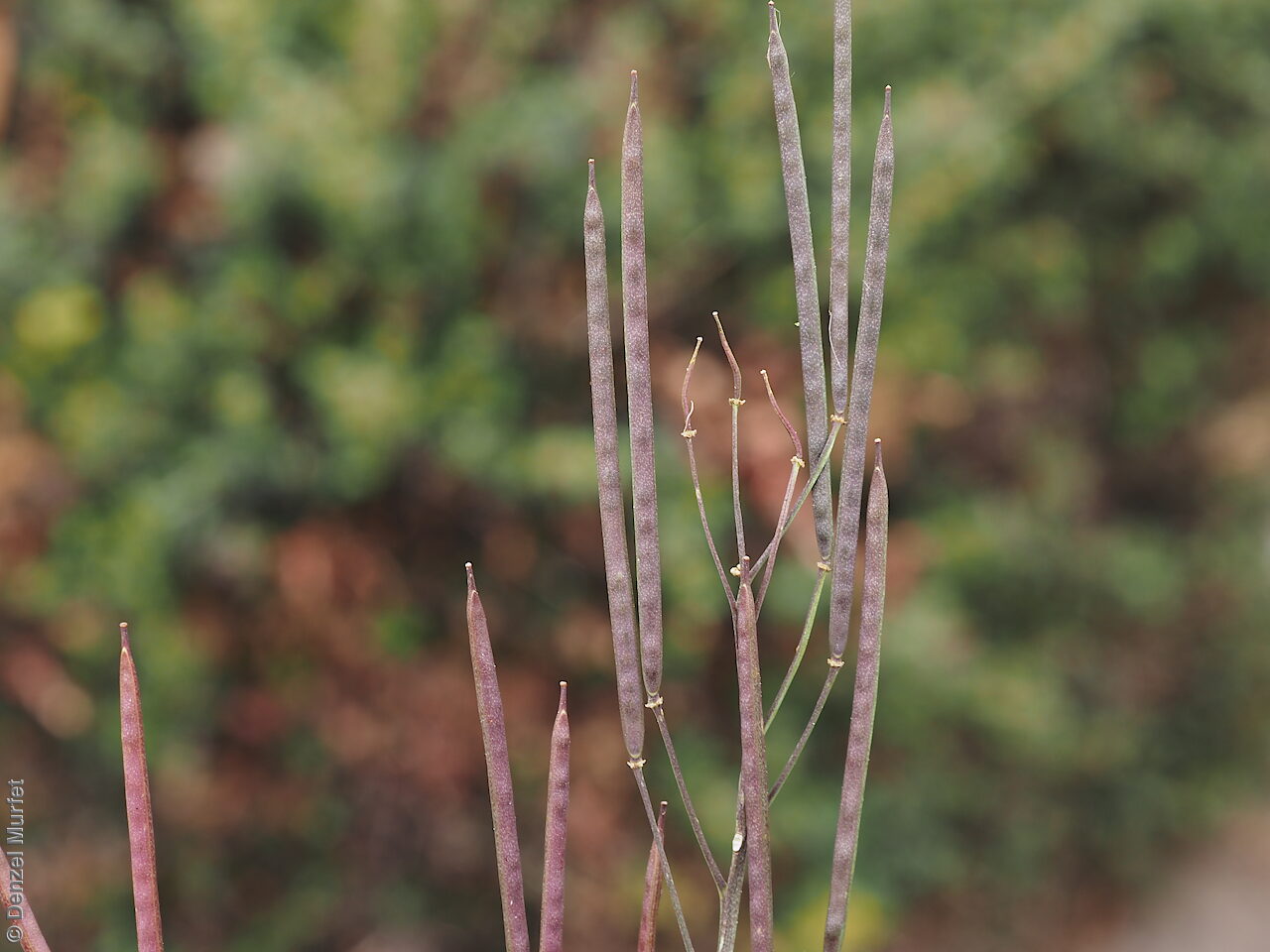
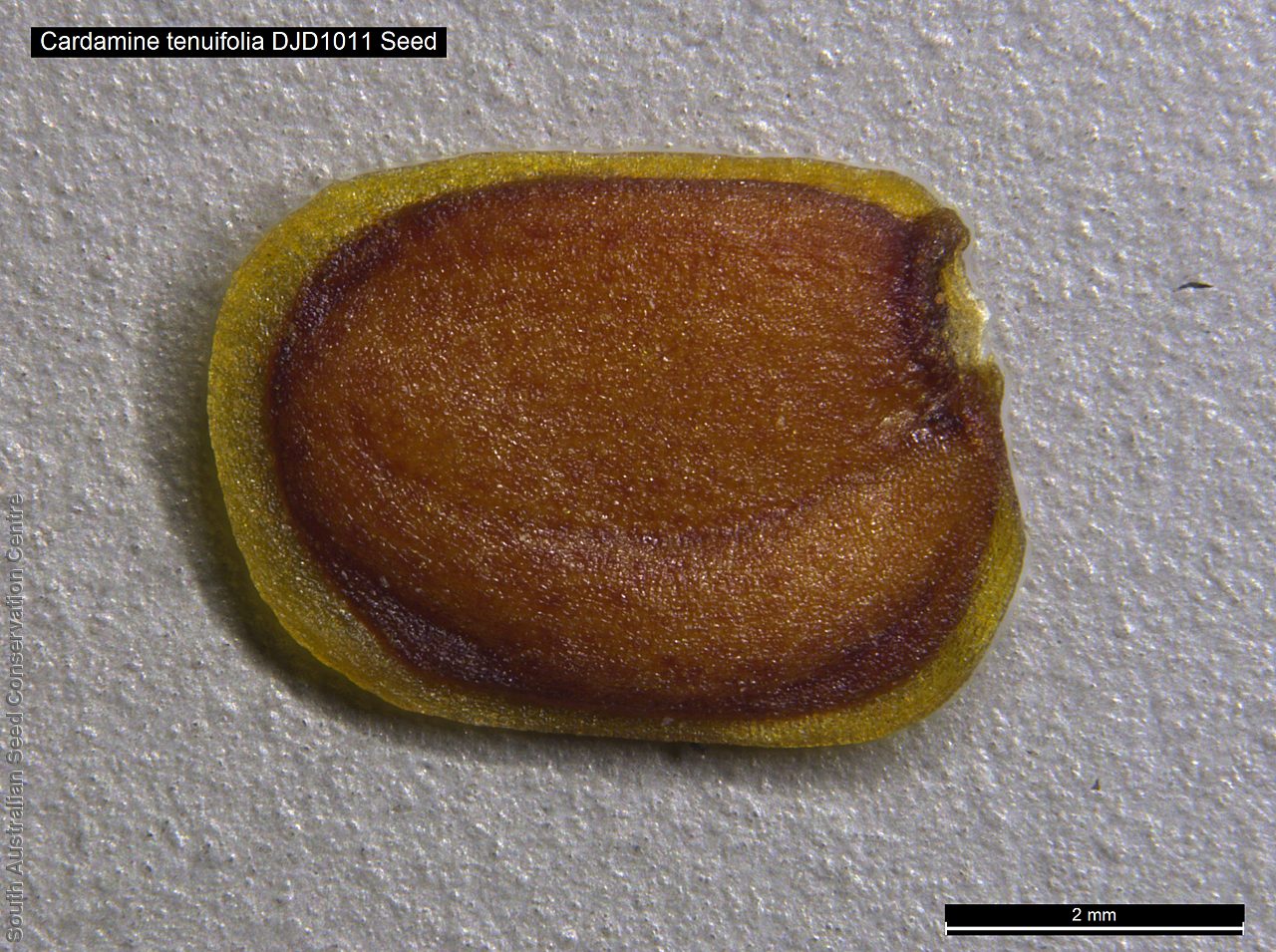
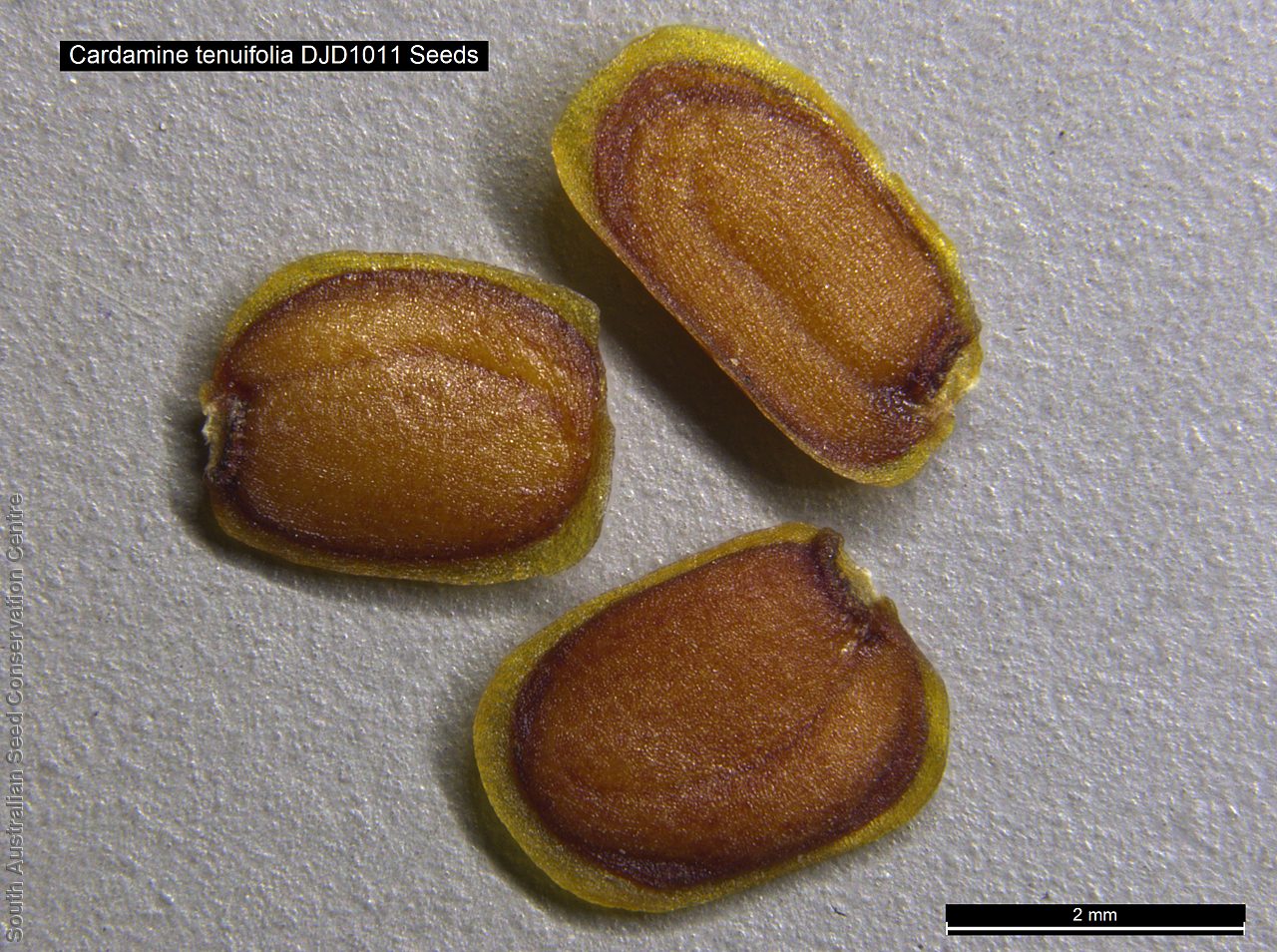

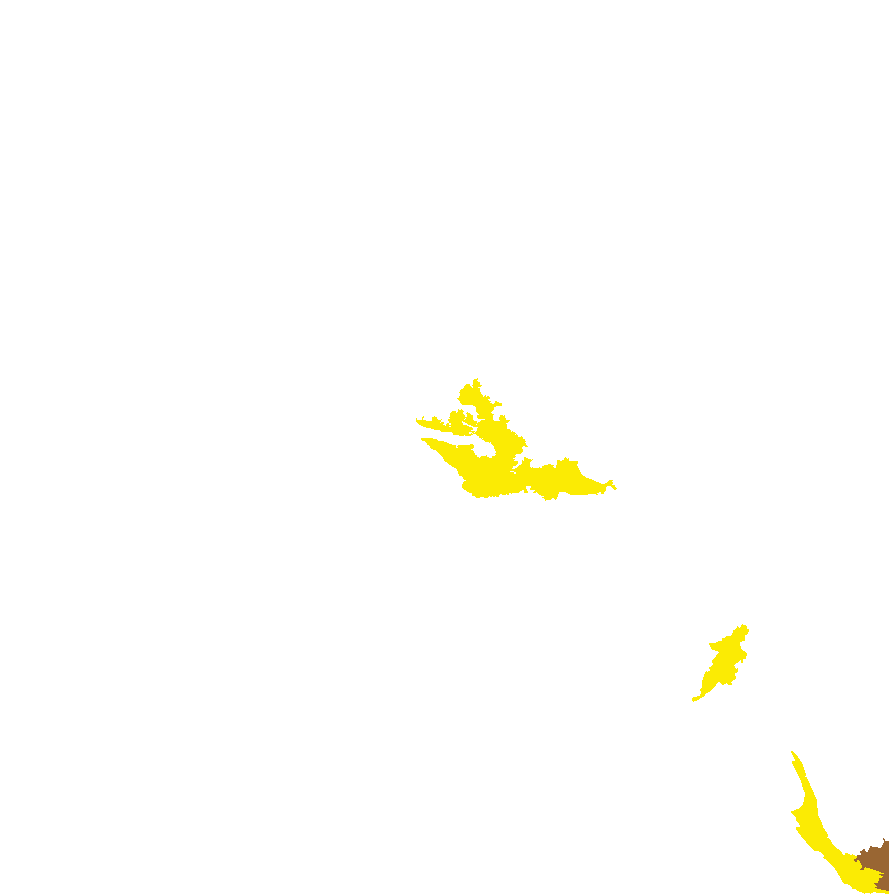
Botanical art
Prior names
Cardamine finitima
Cardamine pratensis var. tenuifolia
Cardamine hirsuta var. tenuifolia
Etymology
Cardamine from the Greek 'kardamon' a name given by Dioscorides for a species of cress, an Indian spice and derived from the Greek 'cardia' meaning heart and 'damaein' meaning to blind, alluding to the reputed heart-strengthening effects of the plant. Tenuifolia from the Latin tenuis meaning slender and 'folium' meaning a leaf, referring to the species having slender leaves.
Distribution and status
Found in the southern Mount Lofty Ranges and the lower South-east in South Australia, growing in swamps and streams. Also found in New South Wales, Victoria and Tasmania. Native. Rare in South Australia. Rare in New South Wales and Victoria. Common in Tasmania.
Herbarium regions: Southern Lofty, South Eastern, Green Adelaide
NRM regions: Adelaide and Mount Lofty Ranges, South East
AVH map: SA distribution map (external link)
Plant description
Elongate, glabrous perennial herb to 50 cm or more high, often with numerous fine fibrous roots arising from lower stems; stems weak, trailing. Leaves predominantly along the stems to 6 cm long (lower leaves not persisting), pinnate with 1-5 pairs of lateral pinnae, terminal and lateral pinnae filiform. Flowers along a spike with white flowers. Flowering between October and March. Fruits are long pale brown pods, splitting into two. Seeds are orange flat reniform seeds to 2 mm long and 1 mm wide with a slight wing around the margin. Seed embryo type is bent.
Seed collection and propagation
Collect seeds between December and May. Collect maturing pods those turning pale brown with orange seeds inside. Be gentle with the pods as they split open easily. Place the pods in a tray and cover with paper to prevent seeds from popping out and leave to dry for a week. Then rub the dried pods gently by hand to dislodge the seeds. Use a sieve to separate the unwanted material. Store the seeds with a desiccant such as dried silica beads or dry rice, in an air tight container in a cool and dry place. Seed viability is usually high.
| Location | No. of seeds (weight grams) | Number of plants | Date collected | Collection number Collection location | Date stored | % Viability | Storage temperature |
|---|---|---|---|---|---|---|---|
| BGA MSB | 7,000 (2.6 g) 7,000 (2.6 g) | 100+ | 12-Dec-2007 | DJD1011 South Eastern | 19-Sep-2008 | 95% | +5°C, -18°C |
Number of plants: This is the number of plants from which the seeds were collected.
Collection location: The Herbarium of South Australia's region name.
% Viability: Percentage of filled healthy seeds determined by a cut test or x-ray.